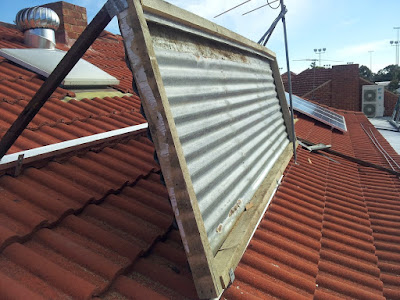What is a TPO roofing system?
TPO roofing is frequently associated with the stark, brilliant, and dazzling white rooftops seen in industrial parks around the country. Yes, that's most likely TPO roofing in US, a single-ply roofing material that's grown popular in commercial roofing. So, what exactly are single-ply and TPO roofing, and how do they differ?
Single-ply Membranes
Single-ply
membranes are made of synthetic and rubber materials. These membranes are
either mechanically secured, ballasted to a roof, or adhered to the insulation
that provides a protective layer on a flat roof surface to cling to a flat
roof.
The
term "single-ply" refers to a type of commercial material that is
widely used. However, you may not be aware that there are two varieties of
single-ply membranes available to meet both commercial budgets and construction
requirements. Among these are:
·
Thermoplastic
Polyolefin (TPO)
·
Ethylene
Propylene Diene Terpolymer (EPDM)
The
material composition, energy efficiency, and installation procedures of these
single-ply membranes differ.
TPO Roofing
TPO
stands for Thermoplastic Polyolefin in scientific terminology. It's a
single-ply membrane with a fabric reinforcing scrim that stabilizes and
reinforces the membrane for better and greater performance. It's made up of a
variety of rubber kinds, most of which are a mix of polypropylene and
ethylene-propylene.
Commercial
roof maintenance
contractors, particularly flat roofs, have seen a lot of
TPO adoption. It's in high demand because of its inherent capacity to deflect
ultraviolet (UV) radiation while conserving energy and lowering power bills.
The
membranes are made in sheet form by the manufacturer and come in widths of 10,
12, and 20 feet. The manufacturer sends the sheets to the facility that
requests and purchases the materials for commercial roofing after they have
been cut, rolled, and assembled.
Why TPO Roofing?
Installing
a TPO roofing system on your existing commercial and industrial
roofing in USA has several advantages. It's tough,
long-lasting, and adaptable. This includes the ability to withstand dirt
buildup, rips, and mold development.
Its
energy efficiency is maybe its strongest feature. TPO membranes reflect and
resist UV radiation, making it easier and more effective to keep a structure
cool. As a result, the HVAC system isn't required to compensate.
Membrane That Can Be Punctured
Easily
This
is arguably the most difficult of all the TPO roofing issues. This roofing
system can be walked on and is both flexible and lightweight, however, the
membrane can be perforated easily.
When
compared to other types of buildings or roofing systems, one of the more
typical TPO roofing difficulties with commercial roofs is the high level of
foot traffic. The single-ply membrane roofing system lacks a hard-top layer
that protects the synthetic rubber layer from lost tools, debris, and loose
screws.
These
materials are forced into the rubber membrane, fracturing or tearing it by
generating holes in the rubber and insulation. This makes the roofing system
more susceptible to leaks in the future.
You
can eliminate this problem with the right primer from the list of TPO roofing
issues by adding an extra layer of protection and insulation that it lacked
earlier.
Expired Warranty
Here's
an important tip: get the warranty when you get a new roof done. This is
because, for the first couple of years following the initial installation, most
manufacturer warranties require the contractor to do such repairs.
Warranties
range from 15 to 30 years in length. Having a warranty on your side will help
you tackle common TPO roofing issues. Keep track of it since, after your
warranty expires, you may be exposed to greater maintenance, commercial roof replacement, and
repair costs, particularly if your facility has been having issues.
It
cannot be overstated how important it is to have a guarantee when it comes to
TPO roofing issues. Things happen, leaks happen, damage happens, and having a
quick, dependable remedy on hand is a lot easier than having to contact a
repair service on your own and pay for it out of cash.
Keeping
yourself insured is a little more expensive than you would think, but it's a
terrific method to protect yourself against long-term difficulties or future
repair expenditures. That alone makes it worthwhile.
Adhesives Degraded by UV Rays
One
of the most typical issues with TPO roofs is wear and tear. No, that's not
true. It is one of the most typical issues that can occur with any roofing
system. This is due to the fact that it is outside 24/7.
This
implies that you will be exposed to the sun on a regular basis. UV rays may do
a lot of damage to a roof over time. It may happen in a variety of ways, but
the most typical TPO roofing issue is when the adhesives used to bond the
membrane to the substrate disintegrate due to UV radiation.
Not
only that, but those adhesives are what keep the membrane seams together to
produce the watertight barrier that keeps your roof safe in even the most
extreme weather. Your roof is unsafe if that seal is missing.
UV
rays can come into touch with the adhesive layer when there are punctures,
rips, or other damage to your roof, and do a lot more harm when those adhesives
disintegrate. As a result, it's critical to overlap the membrane sheets during
installation. This will protect the adhesives from UV radiation and keep TPO
roofing issues at bay, at least temporarily.
Longevity
The
fact that TPO roofing systems do not survive as long as other roofing systems
is perhaps the most prevalent complaint. Although TPO roofing is sturdy and
long-lasting, it is still a relatively new roofing technology.
That
means the TPO material's recipe is still far from ideal, as makers try to
strike a compromise between cost and durability. This implies that some of
these roofing systems have experienced regular TPO roofing issues such as
material failures and seam splits along the road.
Although
there have been advancements along the road, the recipe may not be finalized
for some years. TPO roofing systems, on the other hand, are not only
inexpensive but also, in most cases, long-lasting.
These
TPO roofing issues are all quite prevalent, which means they’re also fairly
simple to fix. Keeping this in mind, it’ll be much easier to keep them in top
shape and avoid significant problems or roof damage.




Comments
Post a Comment